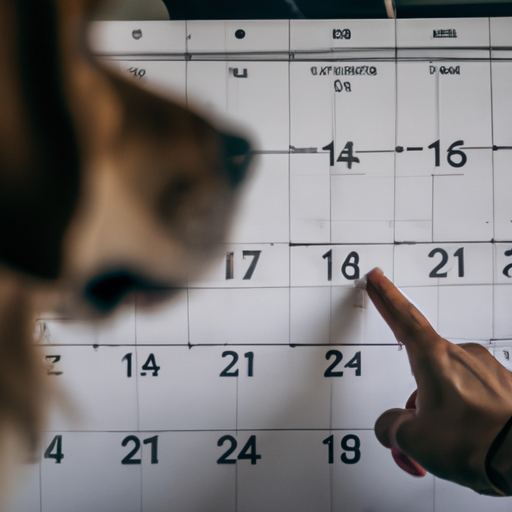For any responsible dog owner, understanding your furry friend’s reproductive health is crucial. One aspect of this involves knowing when dogs start their period, also known as the estrous cycle. This cycle is different from the human menstrual cycle, but it is often referred to as a period because of similar hormonal changes and bleeding.
Table of Contents
- Understanding the Canine Estrous Cycle
- The Onset of Canine Estrous Cycle
- Visible Signs of the Estrous Cycle
- Caring for Your Dog During Her Estrous Cycle
- Frequently Asked Questions
Key Takeaways:
- Dogs typically have their first estrous cycle when they reach sexual maturity, usually between six and 24 months.
- The estrous cycle consists of four stages: proestrus, estrus, diestrus, and anestrus.
- Dog owners need to provide extra care during their pet’s estrous cycle.
- Spaying is a way to prevent your dog from going through the estrous cycle and prevent unwanted pregnancies.
Understanding the Canine Estrous Cycle
The canine estrous cycle consists of four stages: proestrus, estrus, diestrus, and anestrus. It’s important to note that unlike human women, female dogs (bitches) don’t go through a monthly cycle. Instead, most dogs typically go into heat, or estrus, twice a year. This biannual cycle is nature’s way of timing reproduction to maximize the survival of the puppies.
The Hormones and Reproduction of Vertebrates – Volume 5: Mammals provides a deeper understanding of these stages.
The Onset of Canine Estrous Cycle
When do dogs start their period? Dogs usually have their first estrous cycle when they reach sexual maturity. This can occur as early as six months in smaller breeds, but larger breeds may not start until they are 24 months old. Some giant breeds may not have their first cycle until they are two years old or more.
For a more detailed understanding of how breed and size affect the onset of the estrous cycle, you might want to check out this article on Dog Breeding.
Visible Signs of the Estrous Cycle
Recognizing the signs of your dog’s estrous cycle is important for managing it properly. The first stage, proestrus, is marked by vaginal bleeding, which is often mistaken for a period. Your dog may also exhibit behavioral changes, such as clinginess or aggression.
During the estrus stage, your dog is ready to mate. The bleeding becomes lighter and changes to a yellowish color. You might also notice your dog flagging her tail to one side, showcasing her availability to potential mates.
After estrus comes diestrus, where your dog is no longer interested in mating. Lastly, the anestrus stage is a period of inactivity between heat cycles.
For further information on how to handle these changes, One Top Dog offers a wealth of resources.
Caring for Your Dog During Her Estrous Cycle
During her estrous cycle, your dog needs extra care. Ensure she is comfortable and safe, and prevent unwanted pregnancies by keeping her away from unneutered male dogs. You may also want to provide her with a comfortable doggie diaper or special bedding to handle any discharge.
For more tips on caring for your dog during this time, check out this article on dog care.
Frequently Asked Questions
1. Can you spay a dog while she is in heat?
It’s usually recommended to wait until the estrous cycle has finished before spaying, as the increased blood flow to the area makes the surgery riskier.
2. How long does a dog’s period last?
The entire estrous cycle lasts about six months, but the bleeding phase (proestrus and estrus) usually lasts between two to four weeks.
3. Can dogs get pregnant at any time?
No, dogs can only get pregnant during the estrus stage of their cycle, which typically lasts nine days.
Conclusion
Understanding when dogs start their period and how to handle it is an essential part of responsible pet ownership. With the right knowledge and care, you can help your canine friend navigate this biological process comfortably and safely.



